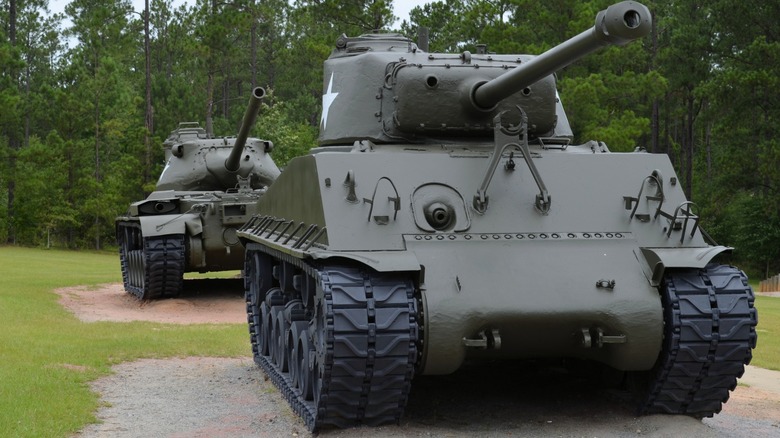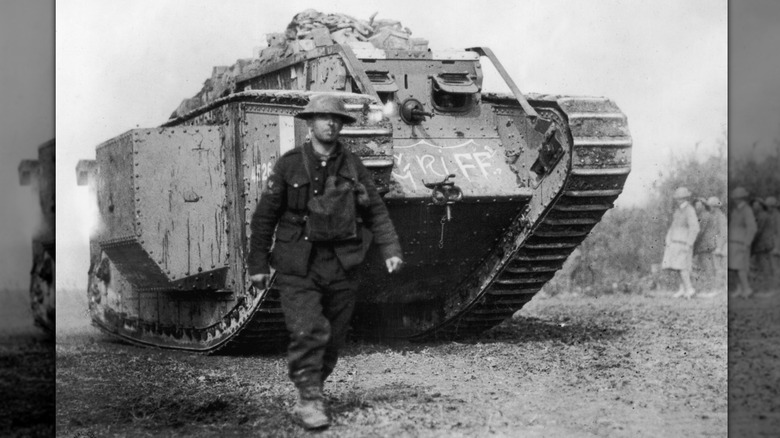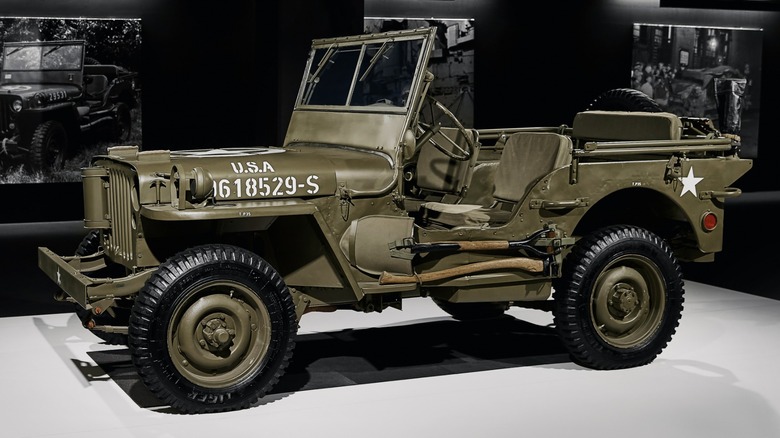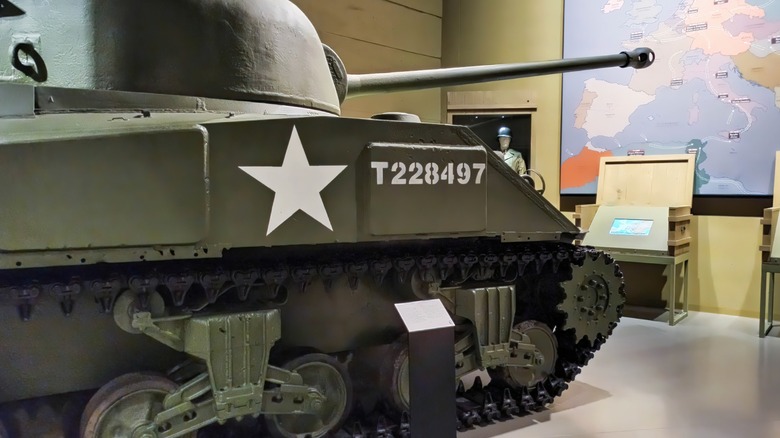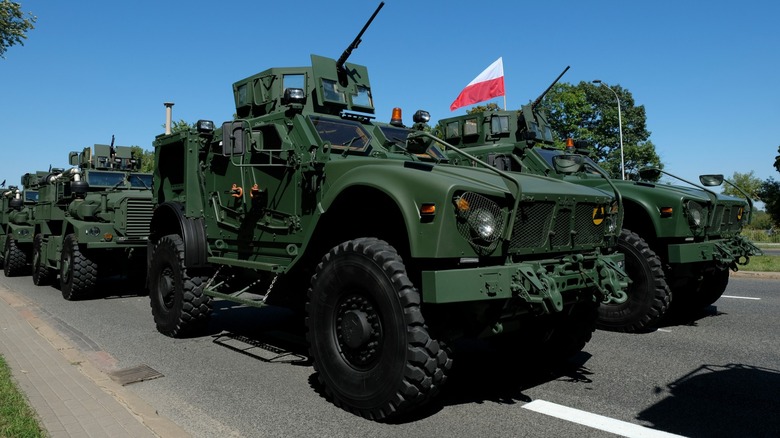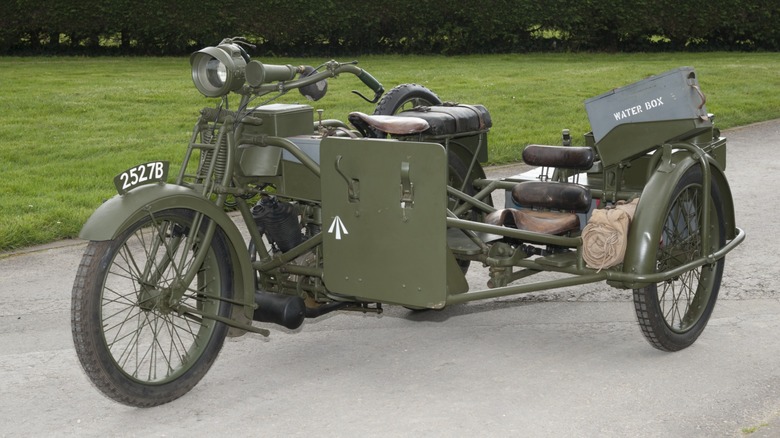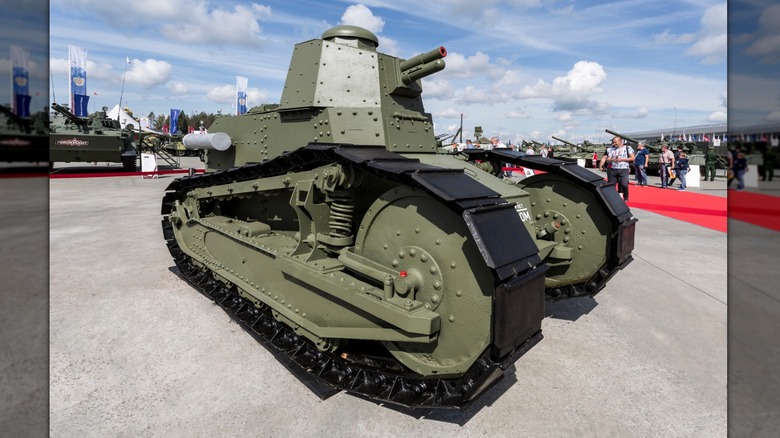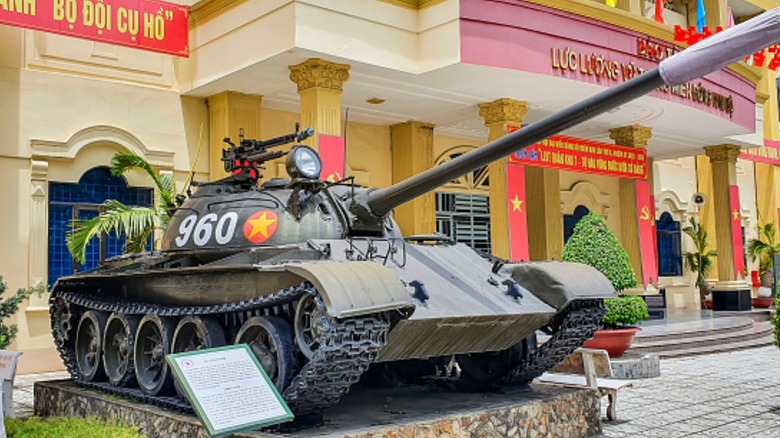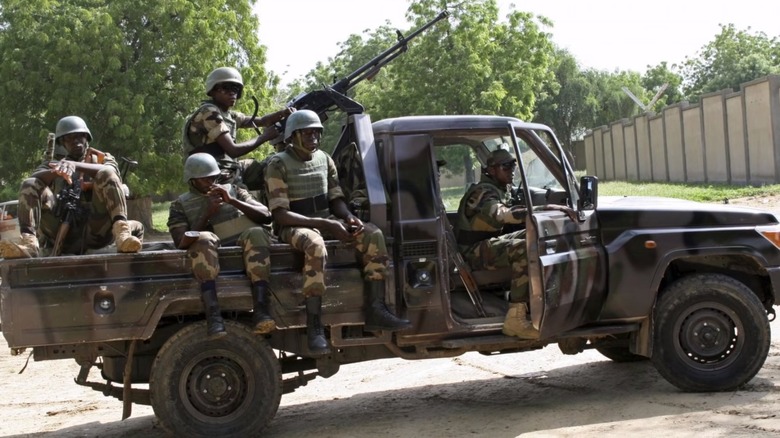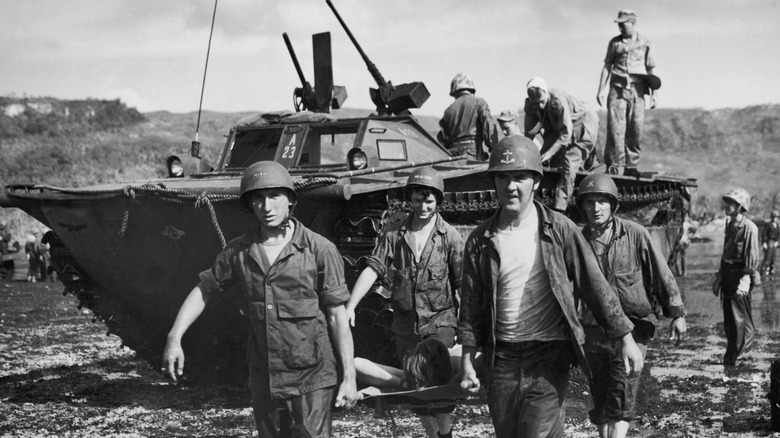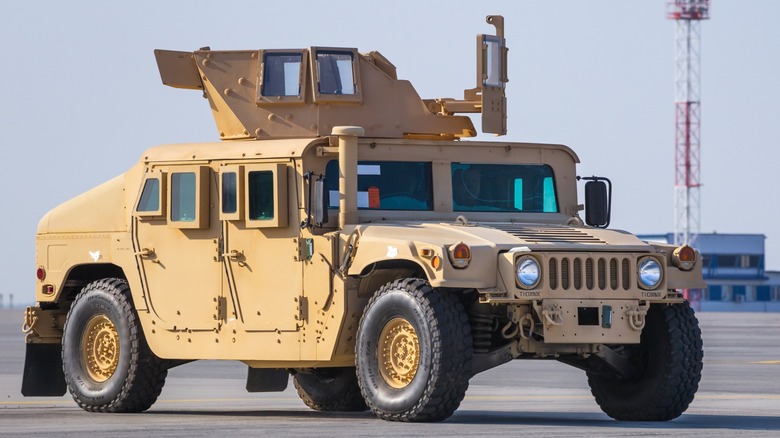10 Military Vehicles That Changed The Course Of History
Some of the most impactful innovations in the world have originated from military applications. Whether that was in metallurgy, textiles, or transportation, technology has a way of filtering down from its use on the battlefield into daily life. Furthermore, the most advanced military powers have always gained an edge over their adversaries not by simply having the largest forces, but also the best equipped. If one Army can harness technology to overpower an enemy faster and with fewer soldiers, the path to victory can become clear. This is why modern governments have invested colossal sums of money into research and development in the name of national defense.
At one time, the most advanced military developments came in the form of the trebuchet, rifle, and cannon. In the modern day, mobility and logistics win wars. Therefore, a well-equipped Army must have the best and latest vehicle options to move men and materiel. While many military vehicles are not much different from ordinary trucks used everywhere, some have a more consequential history. The vehicles listed here have in one way or another had a significant impact on the course of history.
MKIV tank
WWI is widely considered to be the first major conflict to introduce fully mechanized warfare. The rapid innovation of the late industrial age ushered in the age of the automobile, which found its way onto the battlefield. As much as trucks and other motorized equipment changed the nature of the Great War, nothing had such a dramatic impact as the MKIV tank.
Introduced by Great Britain, the MKIV was the first successful implementation of the tank. To be clear, it was not the first tank ever deployed, but it was the first successful tank to engage in battle. The MK I, which was created with the utmost secrecy, was originally called a landship but Winston Churchill, then the First Lord of the Admiralty, chose to call them water tanks during transport to obfuscate their intended purpose. They first appeared on the battlefield in 1916 as formidable and threatening weapons, but failed to have much effect.
It was with upgrades and modifications that the MKIV tank would finally help to turn the tide in 1917. Powered by a 105-horsepower engine and crewed by eight operators, a MKIV used a combination of 6-pounder cannons and machine guns to fight over rough terrain and cross trenches. Although it was abysmally slow, with deplorable operating conditions, the British manufactured 1,220 units and sent them to the front regardless. They became an important part of the formula for defeating the Central Powers, but more importantly, they introduced a new mechanized weapon that continues to be integral to land forces to this day.
Bantam Reconnaissance Car
Though the United States was not yet directly involved in the brewing war in Europe, top Army officials were looking for a small and versatile vehicle by 1940. The Army drafted requirements and put out a call for manufacturers to build a prototype — but on a stiff 49-day deadline for delivery. The only company to heed the call was tiny American Bantam (AB), which built a tough little vehicle called the Bantam Reconnaissance Car (BRC).
The Army wanted a sub-2,000-pound vehicle that could climb a 30-degree grade, pull a cannon, and be capable of traveling wherever a horse could. AB created a prototype that passed Army testing and was asked to build a small batch of more, along with Ford and Willys. Since AB held no patent for the blueprints, the Army later gave them to Willys and Ford to begin production on a large scale to ensure the country was ready for what many saw as the inevitable outbreak of war. AB received no further contracts.
The BRC became known as the Willys or Ford GP, or General Purpose, and were produced and sent overseas in droves to fight in Europe and the Pacific islands. They proved to be capable of traversing nearly any terrain with incredible reliability and were quickly seen by soldiers as one of the most important pieces of equipment at their disposal. By war's end, more than half a million GPs were made and Willys began manufacturing them as civilian models, giving rise to the modern Jeep, an American icon.
M4 Sherman Tank
When war broke out on the European continent, the United States military was in decline. Throughout the 1930s, American tank development was miniscule and largely overlooked, with decreased spending since the end of The Great War. Manufacturing increased in 1939 to help British capabilities, but American tank design was still lacking. Only after observing the flaws in its current designs did the Army create the M4 Sherman.
Although its design was based on its predecessor, the M3 Lee, many changes were effected to improve its capabilities and overall versatility. M4 Sherman is a general name that actually describes many different models produced using the same basic design but with various different components, depending on each unit's purpose. Shermans incorporated 400- to 470-horsepower engines, a variety of machine guns and cannons, and the front armor was steeply sloped to deflect enemy fire, a novel feature for the time, although it made for a very tall profile.
The truth of the Sherman is that it was wildly outclassed by the German Panzer. However, it did not matter as American industry was able to churn out 49,000 Shermans in three years from 1942, equaling German production of all its tank variants from 1935 to 1945. What the Sherman lacked in capability was made up for with sheer numbers, allowing the Allies to overwhelm the enemy on the battlefield. It proved more than anything that American industry could outproduce anyone to win when backed into a corner, a trait that has endured ever since.
MRAP
The 2003 invasion of Iraq by American forces quickly presented new and evolving threats to soldiers in urban environments and their HMMWV, aka Humvee, transport vehicles proved to be highly vulnerable. Conflict in the Middle East presented soldiers with a new and terrifying kind of warfare that would be fought in urban areas and often by insurgents rather than government-backed military forces. The HMMWV of the era was a highly capable vehicle, but was ill-prepared for the improvised explosive devices (IED) first encountered en masse in Iraq.
Officials of the American military recognized a glaring deficiency in their light troop transports and sought to remedy the situation quickly. The program to create and deliver a replacement went on to be a model for rapid acquisition as it had been envisioned, planned, and implemented in record time. With a top priority assessed to the program, defense equipment planners collected bids from manufacturers for mine-resistant vehicles. Using adaptations of existing vehicles, the Department of Defense was able to begin delivering these new machines, called MRAPs in less than a year, the fastest military procurement since WWII.
The MRAP procurement program succeeded in reducing casualties to American soldiers by nearly 80%. However, each vehicle is extraordinarily expensive, costing about $600,000, which drew skepticism for the enormous taxpayer expense. In terms of lives saved, most officials think it was money well spent. It has also led to widespread adoption not just by foreign militaries, but also with humanitarian organizations and law enforcement worldwide.
Motorcycles
Before WWI, the primary form of transport in war was the horse. They continued to be used through WWII, as even the mighty German Army continued to field regiments of soldiers, each on one of its nearly 4 million cavalry horses. However, the mechanized warfare of WWI presented an opportunity to replace the trusty steeds with one that required much less grazing time and rarely tired — the motorcycle.
Even before the assassination of Archduke Ferdinand in Serbia, the American Army had encountered conflict with men on motorbikes when Pancho Villa's soldiers crossed over the border from Mexico to raid Columbus, New Mexico in 1916. They rode Indians, while General John J. Pershing was sent to the area with trucks, aircraft, and Harley-Davidsons. Pershing's soldiers could cruise up to 60 mph on their Model J Harleys, and had several of them equipped with sidecars mounted with machine guns. Although Pershing never caught Villa, he proved the merit of the motorcycle for military use.
Motorcycles were again deployed in WWI on both sides of the conflict. They were used again with heavy machine guns, and to move in and around the front line. Motorcycles also served as ambulances capable of carrying one or two soldiers to a field hospital, while most motorcycles delivered communications. While modern equipment has mostly superseded these roles, motorcycles continue to be a part of modern military strategy as their agility, speed, and light weight make them indispensable and easy to deliver.
Renault FT
While Britain brought the lumbering MKIV tank across the Channel and to the fight, France was already working on an armored tracked vehicle. Instead of building something of excessive size that would overwhelm the enemy with its girth, French automaker Renault came up with a design that was small, maneuverable, and lightweight, that could be built in sufficient quantity to overwhelm the enemy with numbers. Prototypes were being built as early as 1916, but setbacks in development, combined with politics, kept it from seeing action until 1918.
The comparatively tiny Renault FT was operated by a crew of two, a driver and a gunner. It was armed with a 37mm Puteaux gun that was mounted in its most revolutionary feature, a rotating turret. Unlike the fixed guns in the sponsons of the British MKIV, the FT could swivel and fire in any direction, making it possible to fend off attacks from multiple directions. Although it was not until 1918 that sufficient numbers of FT tanks were built and deployed, swarms of them played a crucial role in bringing an end to the war.
After the war, the FT was widely exported and used by at least a dozen countries. Its novel turret became the standard for all future tank design, and the FT became the first tank fielded by the United States Army. They continued to be used through WWII until new developments made them functionally obsolete.
T-55 tank
During WWII, the Soviets produced the T-34 tank and it played a big role in the defeat of Germany on the Eastern Front. While it failed to deliver much success early in the war, the Soviet war machine produced them in sufficient numbers that they would eventually overwhelm the freezing German troops and send them back home to Berlin. As important as that tank was for the Allied victory, its successor may have had an even greater impact on history.
With a prototype already built by 1945, the T-34 replacement came quickly after the close of the war. Full-scale development commenced in 1947, and the new T-55 soon became the primary battle tank for the Soviet Union and its allied Warsaw Pact countries. The new tank featured many improvements over its predecessor, including being much lighter, making it able to cross more bridges and run through softer mud without getting stuck. Although it improved upon the previous model, it also had its flaws, but neither its strengths nor its weaknesses are what made it so impactful.
Manufactured by the Soviet Union and its allies, the T-55 became the most produced tank in history. Estimates place total numbers between 86,000 and 100,000, with production continuing until the 1980s. It is also the most exported tank, and went into service with dozens of countries around the world, continuing to be used until the modern day. Its impact has been felt in numerous conflicts, from Vietnam to civil war in Africa and even still today in Ukraine.
Toyota trucks
Territorial conflict plagued the countries of Libya and Chad throughout the 1970s and 1980s. These hostile feelings boiled to the surface in 1987 when armed conflict broke out between the two nations. With Libya's well-equipped army of tanks, artillery, helicopters, and more, Chad's prospects looked dim. But Chad put its ingenuity to the test and squared off with its better-equipped neighbor.
Donald Rumsfeld once said, "You go to war with the army you have, not the army you might want or wish to have at a later time." Therefore, Chad's ragtag army units put together around 400 Toyota trucks given to them by France and took them to the fight. With machine guns and anti-tank guided missiles mounted in the beds, and groups of AK-47-wielding soldiers riding alongside them, Chad moved in for a surprise attack against a Libyan military position. By the end of the fight, Libya had lost 784 soldiers, 92 T-55 battle tanks, and 33 BMP-1 infantry fighting vehicles, while Chad's losses amounted to 18 soldiers and just three Toyotas.
This was the birth of the "technical," It has since become a fixture of civil war and insurgencies across the world, featuring prominently in the Middle East, Afghanistan, and African conflicts for years. More recently, Ukraine has been modifying its trucks to take the fight to the occupying Russians. While Toyota has an official policy against such use of its products, as long as impoverished people engage in armed conflict, Toyotas will be there.
LVT-1 Alligator
Sometimes, military innovation can come from unlikely places. Additionally, the urgent need for solutions to a problem can facilitate and expedite problem-solving with novel ideas. Such is the case with the LVT-1 Alligator of WWII.
Inspiration for this vehicle came from a wealthy Florida resident who saw a need for a rescue vehicle after a devastating hurricane in 1926. With a penchant for tinkering and virtually endless funds, Donald Roebling put together a mechanical contraption that could seamlessly travel from water to land thanks to a watertight hull and tracks that doubled as paddles on water. The Marines later caught wind of this machine and had the first models produced by 1941.
The onset of war brought mass production of the Alligator, which first saw combat in 1942 at Guadalcanal. Initially used for transporting supplies to shore, they were later used as beach assault vehicles, proving to be instrumental in getting Marines on shore in large numbers. Alligators contributed greatly to success in the Pacific and in establishing the amphibious assault vehicle as a standard piece of Marines hardware continuing through to today.
HMMWV
From the time of WWII through the end of the Vietnam War, the Jeep remained the most recognizable military vehicle, as well as being the most rugged and capable piece of Army equipment. Its original design held up through various conflicts small and wide, requiring few upgrades over the years while retaining the original design. Yet, in the period after Vietnam fell to the North, the Jeep was showing its age and it was time to find a replacement.
The replacement design and requirements had been created by the Army in 1979, and a call for contracts went out. By 1982, AM General had delivered 11 prototypes and was awarded the contract for full production of 55,000 of the new High Mobility Multipurpose Wheeled Vehicle (HMMWV), commonly called the Humvee. The first combat operations that used the Humvee were in Panama in 1989; it was used again extensively during Desert Storm in 1991.
These huge vehicles were perfectly suited to combat missions and other military uses, but in 1992, action star Arnold Schwarzenegger got it in his head that he wanted one so badly that he contacted AM General to plead for them to build him a civilian version. Amazingly, it worked, and the civilian and road-legal Hummer was born. Despite being completely ill-suited for public roads, the Hummer went on sale in 1992. It continued to sell for many years, spawning a second H2 model before being shut down in 2010, only to be revived as an electric monster with the all-new GMC Hummer EV in 2020.
